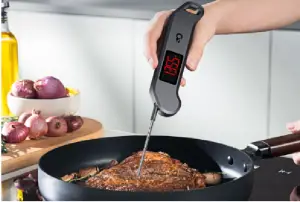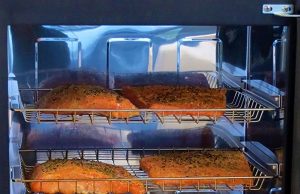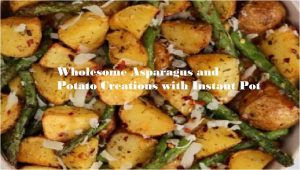Steaming Cooking Method: Healthy and Delicious
The steaming cooking method involves cooking food with steam, using a steamer or a vessel with a lid that can trap steam inside. Steaming is a healthy, low-fat cooking technique that preserves the nutritional value of food and retains its original flavor and texture.
The steaming cooking method is not only a popular technique but also a healthy and delicious way to prepare a wide variety of dishes. By using the power of steam, this method helps retain the natural flavors, textures, and nutrients of the ingredients. Whether you’re a seasoned chef or an amateur cook, steaming offers an excellent way to create meals that are both nourishing and satisfying.
From vegetables and seafood to poultry and grains, the possibilities are endless. Steaming allows you to cook different types of ingredients simultaneously, resulting in a harmonious blend of flavors and textures. It’s a method that encourages creativity in the kitchen, enabling you to experiment with various combinations of ingredients and spices.
Unlike boiling, which may lead to nutrient loss, steaming preserves the nutritional value of food. It requires minimal water, preventing the leaching of essential vitamins and minerals. Moreover, steaming eliminates the need for added fats or oils, making it a heart-healthy cooking method.
Indirect steaming is a popular variation of this technique. By using a steaming basket or a bamboo steamer, you can elevate your culinary skills and create restaurant-quality dishes at home.
The food is placed above the water, allowing the steam to envelop it and gently cook it to perfection. This method is particularly suitable for delicate ingredients such as fish fillets, dumplings, or even cakes.
To achieve the best results with steaming, it’s essential to pay attention to the cooking time and temperature. Each ingredient has its own optimal steaming duration and temperature.
For example, vegetables generally require shorter steaming times, while tougher cuts of meat or grains may need longer cooking periods.
Why Steaming Is A Healthy Cooking Method
Steaming is widely recognized as one of the healthiest cooking methods available. It involves cooking food by using the steam generated from boiling water, without submerging the food directly in water or adding any additional fats or oils. This gentle cooking process retains the natural flavors, nutrients, and colors of the food, making it an excellent choice for those seeking a nutritious and delicious meal.
One of the key benefits of steaming is that it preserves the vitamins and minerals present in the food. Unlike other cooking methods that may cause nutrient loss through heat or water-soluble vitamin leaching, steaming helps to maintain the integrity of these essential nutrients. Additionally, steaming requires minimal cooking time, reducing the exposure of the food to high temperatures that can degrade sensitive vitamins.
Steaming is also a great option for those looking to reduce their calorie and fat intake. Since no oil or fat is required for cooking, steamed dishes are often lower in calories and healthier compared to fried or sautéed alternatives.
Steaming also helps to retain the natural moisture of the food, resulting in tender and juicy textures without the need for added fats.
Furthermore, steaming is a safe cooking method as it eliminates the risk of burning or charring the food.
Unlike grilling or frying, where high temperatures can lead to the formation of potentially harmful compounds, steaming gently cooks the food, reducing the formation of carcinogens. This makes it a suitable choice for individuals concerned about the potential health risks associated with other cooking methods.

How To Steam Food: A Step-By-Step Guide
Step 1: Prepare the Equipment
Gather the necessary equipment for steaming, including a pot or steamer, a lid, a rack or steamer basket, and tongs or a spatula. Ensure that the pot or steamer is large enough to accommodate the food you wish to steam.
Step 2: Add Water
Pour an adequate amount of water into the pot or steamer, ensuring it is below the level of the steamer rack or basket. The exact amount of water will depend on the size of the pot and the cooking time required.
Step 3: Place the Food
Arrange the food you wish to steam on the rack or in the steamer basket. Make sure to leave some space between the individual pieces or items to allow steam to circulate freely.
Step 4: Cover the Pot
Place the lid securely on the pot or steamer to create a tight seal. This will trap the steam inside and allow it to cook the food evenly.
Step 5: Heat the Water
Place the pot or steamer on the stove over medium-high heat. Allow the water to come to a simmer or gentle boil. The steam will start to rise and cook the food.
Step 6: Steam the Food
Once the water is simmering, reduce the heat to medium or low to maintain a steady steam. Steam the food for the recommended cooking time, which will vary depending on the type and size of the food. Avoid lifting the lid frequently, as this will release valuable steam and extend the cooking time.
Step 7: Check for Doneness
After the recommended cooking time has elapsed, carefully open the lid and test the food for doneness using a fork or thermometer. Ensure that the food is cooked thoroughly and reaches the appropriate internal temperature.
Step 8: Remove and Serve
Using tongs or a spatula, carefully remove the food from the steamer and transfer it to a serving dish. Be cautious as the steam and equipment may be hot. Serve the steamed food immediately while it is still hot and flavorful.
Steaming food is a simple and healthy cooking method that preserves the natural flavors and nutrients of the ingredients. It is important to note that the cooking time will vary depending on the type of food being steamed. Vegetables, seafood, and poultry may have different cooking times, so it is crucial to follow specific recipes or guidelines for optimal results.

Types of Steaming in Cooking
Steaming is a versatile cooking technique that can be accomplished using various methods, each with its own unique advantages. Here are some common types of steaming in cooking:
1. Bamboo Steaming
This traditional method involves using bamboo steamers, which are stacked on top of a pot of boiling water. The food is placed in the bamboo steamer, allowing the steam to circulate and cook the ingredients evenly. Bamboo steaming is often used in Asian cuisines and is particularly suitable for delicate items like dumplings and fish.
2. Electric Steaming
Electric steamers are convenient and user-friendly devices that make steaming a breeze. These appliances feature multiple tiers or compartments to accommodate different food items simultaneously.
They often come with adjustable temperature settings and timers, ensuring precise and effortless streaming. Electric steamers are ideal for everyday cooking and can be used for a wide range of dishes, from vegetables and seafood to grains and desserts.
3. Microwave Steaming
This quick and convenient method utilizes microwave-safe containers or specialized microwave steamers. The food is placed in the container along with a small amount of water, and the dish is covered to trap the steam. When microwaved, the water evaporates, creating steam that cooks the food. Microwave steaming is a time-saving option for those who prefer a rapid cooking process.
4. Steam Ovens
Steam ovens are appliances that combine steam and traditional cooking methods. These ovens have a water reservoir that generates steam, which is then circulated within the cooking chamber.
Steam ovens offer precise temperature control and allow for a wide range of cooking techniques, including baking, roasting, and, of course, steaming. They are a versatile option for individuals who want the benefits of steaming along with the ability to cook in various styles.
Foods That Are Suitable for Steaming
A wide variety of foods can be cooked using the steaming method, making it a versatile and practical choice for many dishes.
1. Vegetables, such as broccoli, carrots, and green beans, are ideal for steaming, as they help retain their nutrients, color, and texture.
2. Fish and seafood, like salmon, shrimp, and mussels, can be steamed to perfection, resulting in tender and flavorful dishes.
3. Poultry, including chicken and turkey, can be steamed for moist and succulent results.
4. Dumplings and buns, popular in Asian cuisine, are often steamed to achieve a soft and delicate texture.
5. Even certain desserts, like puddings and custards, can be prepared using the steaming method.
FAQs
What Is the Steaming Cooking Method?
The steaming cooking method involves cooking food by surrounding it with hot steam, usually generated by boiling water. This gentle, moist-heat cooking technique preserves the food’s nutrients, color, and texture, making it a healthy and versatile option for preparing a variety of ingredients, including vegetables, fish, and dumplings.
How Does Steaming Compare to Other Cooking Methods?
Steaming is a healthier alternative to frying or boiling, as it retains more nutrients and requires no added fat. It also prevents overcooking, ensuring that food remains tender and flavorful. Unlike baking or roasting, steaming doesn’t produce a crispy exterior, making it ideal for delicate ingredients.
What Equipment Is Needed for Steaming?
To steam food, you’ll need a steamer basket, a steaming rack, or a bamboo steamer. These tools elevate the food above boiling water, allowing steam to circulate and cook the food evenly. A pot with a tight-fitting lid is also essential to trap the steam inside.
Can I Steam Multiple Foods at Once?
Yes, you can steam multiple foods simultaneously by using a multi-tiered steamer or stacking steamer baskets. This method saves time and energy, but be mindful of cooking times for each ingredient to ensure even cooking and prevent overcooking.
How Do I Know When My Food Is Done Steaming?
Cooking times vary depending on the food and its thickness. Vegetables should be tender but still retain their vibrant color, while proteins like fish should be opaque and flake easily. Use a fork or knife to test for doneness, and adjust cooking times as needed.
Can I Add Flavor to My Steamed Food?
Absolutely! Enhance the flavor of steamed food by adding herbs, spices, or aromatics like garlic and ginger to the steaming water. You can also marinate ingredients before steaming or serve them with flavorful dipping sauces to elevate the taste.
Read More:





